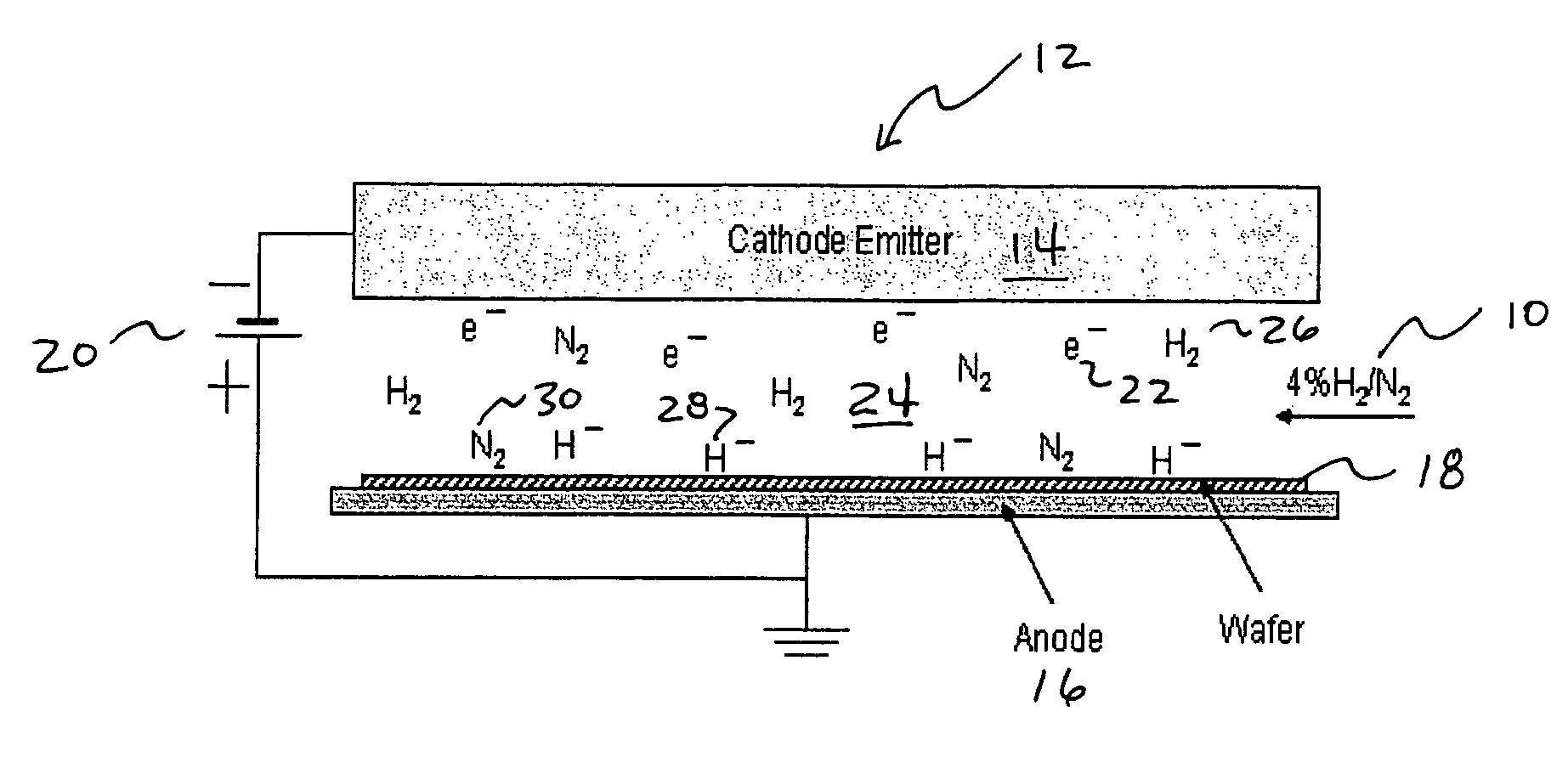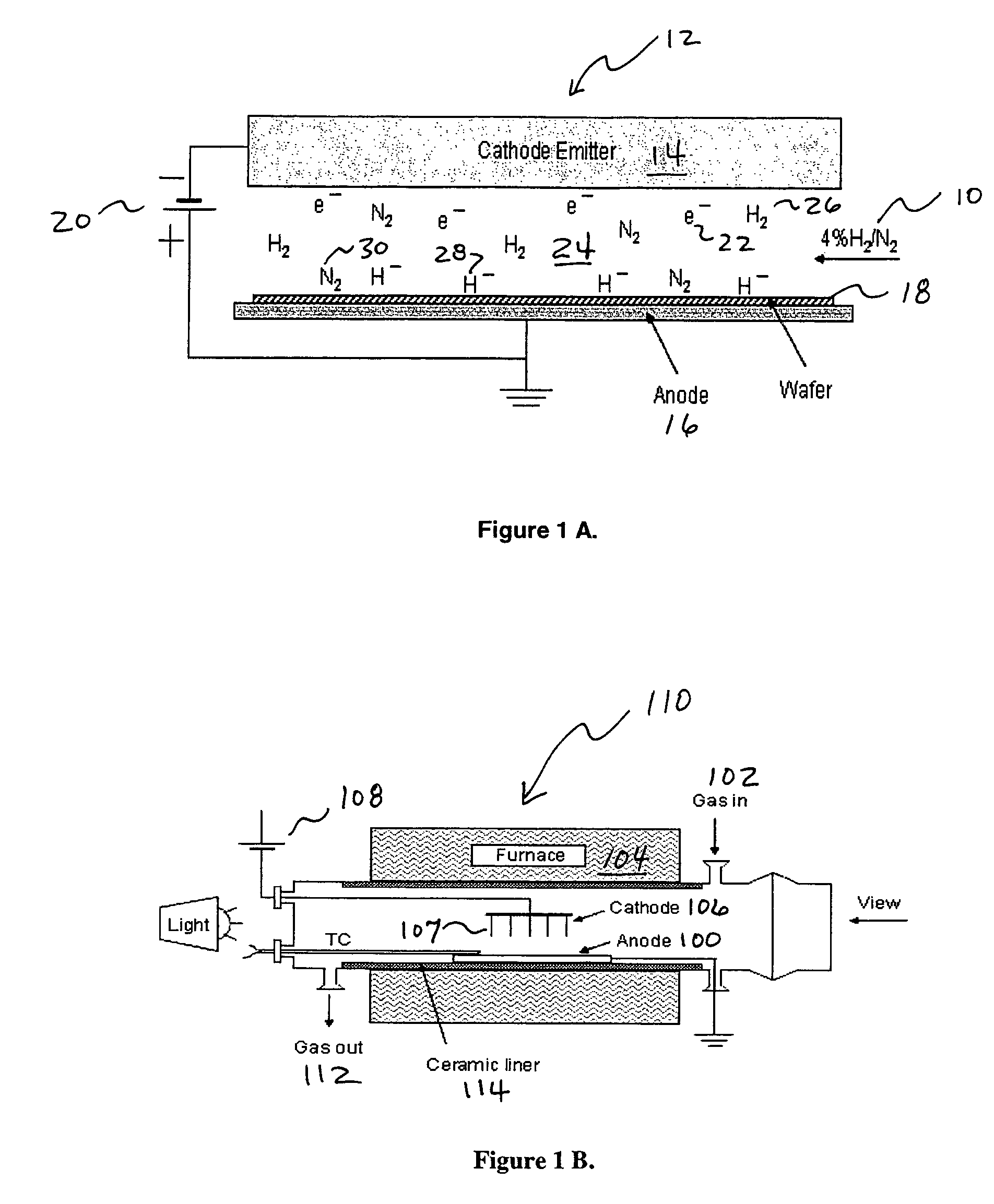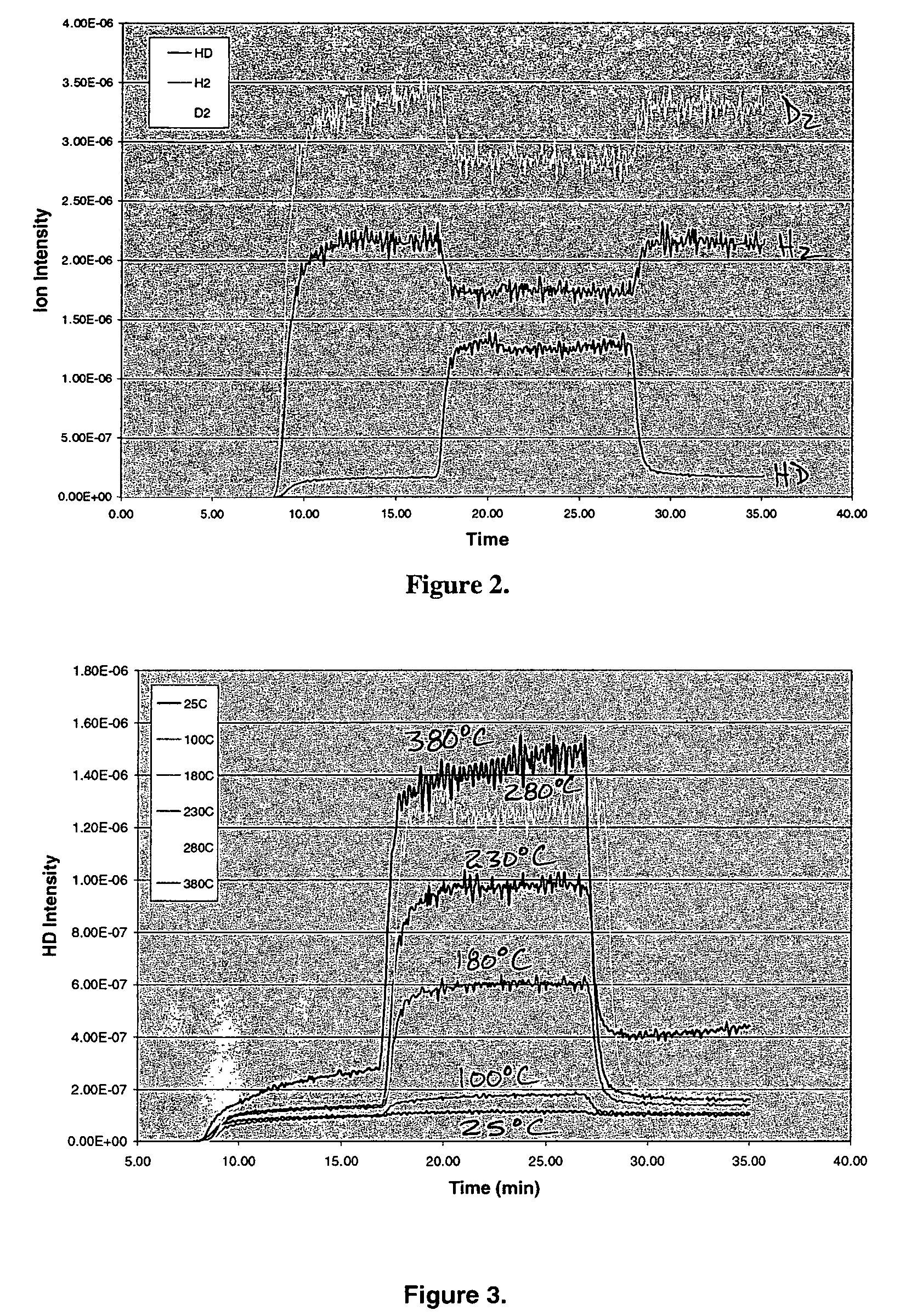Addition of D2 to H2 to detect and calibrate atomic hydrogen formed by dissociative electron attachment
a technology of dissociative electron attachment and atomic hydrogen, which is applied in the direction of electrochemical machining apparatus, solid-state devices, cable/conductor manufacturing, etc., can solve the problems of forming voids in solder joints, corrosion and electric shorts, and contaminating the reflow furnace, so as to enhance the flow of electrons
- Summary
- Abstract
- Description
- Claims
- Application Information
AI Technical Summary
Benefits of technology
Problems solved by technology
Method used
Image
Examples
Embodiment Construction
[0036]The present invention concerns H2 fluxless soldering, particularly wafer bumping reflow soldering. The present invention can be made by modifying the traditional reflow or wave soldering machine. The present invention is also applicable to metal plating, such as the solder plating of portions of printed circuit boards or metal surfaces to make them more amenable to subsequent soldering. The removal of oxides by hydrogen fluxless processing (dry fluxing) of the present invention is equally applicable to such metal plating techniques.
[0037]The removal of initial solder oxides and prevention of further oxide formation during reflow can be accomplished in numerous ways. Currently, the most commonly used approach is to coat the electroplated solder bumps on the wafer with a flux before reflow, or mix the flux with the solder paste that has been printed onto the wafer to form the bumps. The flux-coated wafer or the wafer with flux-containing solder bumps is then reflowed in a nitrog...
PUM
| Property | Measurement | Unit |
|---|---|---|
| emission current | aaaaa | aaaaa |
| emission current | aaaaa | aaaaa |
| emission current | aaaaa | aaaaa |
Abstract
Description
Claims
Application Information
 Login to View More
Login to View More - R&D
- Intellectual Property
- Life Sciences
- Materials
- Tech Scout
- Unparalleled Data Quality
- Higher Quality Content
- 60% Fewer Hallucinations
Browse by: Latest US Patents, China's latest patents, Technical Efficacy Thesaurus, Application Domain, Technology Topic, Popular Technical Reports.
© 2025 PatSnap. All rights reserved.Legal|Privacy policy|Modern Slavery Act Transparency Statement|Sitemap|About US| Contact US: help@patsnap.com



